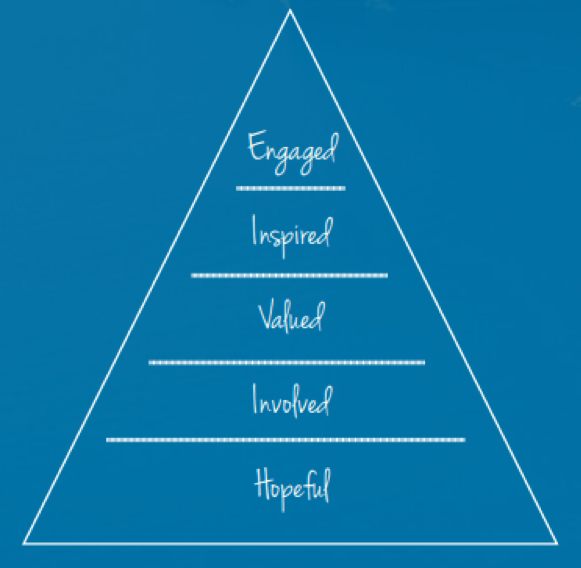If your employees feel a connection to your organization, if they understand their place in it and can see a future for themselves there, they’re far more likely to be engaged. And engaged employees are critical to the success, both short and long-term, of your company. To increase the likelihood that your employees will fulfill their potential and truly engage with their work and with each other, you need to design the ideal employee experience. In this article, we describe the five phases of the ideal employee experience. Understanding them is the first step to building a culture of engagement at your company.
Hopeful
Most new hires are hopeful and optimistic about their decision to join your organization. We’ve all been there-it’s the “honeymoon period.” By joining your company, new hires have taken the first step, but they’re still not exactly sure what they’ve signed up for. It’s critically important to establish a firm foundation at this moment in the employee experience. Within the first 30 days, organizations need to at least begin to answer three important questions: Who do I work for? Why should I be proud to work here? Why am I here? If these basic questions aren’t answered, the foundation of the employee experience will be unstable.
Involved
The next step is to get new employees involved in the day-to-day life of the company, beyond their assigned tasks and responsibilities. Here’s the key: remember, there’s no one size fits all solution. Identify your employee’s passions-those things that really motivate them-and build programs that appeal to different personalities. For example, extroverts might jump at the chance to be part of a young professionals initiative. Introverts might prefer to be part of a smaller group, say a focus group dedicated to uncovering insights around a particular problem or challenge. All new employees will likely benefit from some degree of mentorship. Discover what works for your company, but whatever paths you choose, be sure to offer multiple “on ramps” to get new hires feeling involved and connected.
Valued
Everyone wants to feel appreciated and valued, but not everyone wants to see their name in lights. The next phase of the employee experience challenges the organization to provide multiple ways to recognize and reward employees. We all know from experience, and have probably read the research on just how important it is for Millennials to feel appreciated for the value they contribute to a collective vision or goal. Rewards don’t always have to be, nor should they be, financial. Again, this is about figuring out what resonates with different kinds of people. Some team members will be delighted by outward signs of appreciation, others will prefer a handwritten note, a branded company t-shirt, or an invitation to a task force focused on tackling a business-related challenge. Showing team members that they are valued, and that they are progressing in their careers, doesn’t have to be complicated or difficult, but it can have a disproportionately positive impact on engagement scores.
Inspired
Employees who feel involved and valued become inspired to do their best work. At this stage of the employee experience journey, employees understand their place in the organization and are excited and proud to be part of the team. The danger at this stage is that employees can become complacent. Build on a solid foundation by continuing to challenge employees with new opportunities to learn and grow. Now is the time to dial up career pathing, so that employees have a clear vision on where they’re going and what they need to get to the next level.
Engaged
When your employees feel involved, valued, and inspired, you have an engaged workforce that, given the right tools, can become evangelists for your company. Granted, not everyone will reach this pinnacle of engagement-not all humans were meant to be evangelists. But if you’ve patiently laid the groundwork, your company is far more likely to create an environment in which people who want to promote your company’s mission, purpose, and values are ready and willing to do so; now, it’s up to you to give them a platform to do just that.
In the coming months, we’ll share with you an action plan to help identify, amplify, and track the results your employee evangelists can have on recruiting, hiring, and your company’s overall engagement score.
What’s next?
We have a lot more to share on this final pillar of HR excellence. In the next few months, we’ll help you build the ideal employee experience with actionable plans and expert advice on:
- Re-engaging employees who have lost their way
- Identifying and activating your most engaged employees
- Designing the employee experience from the ground up
- Creating and measuring the results of an employee referral program










